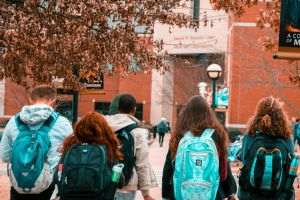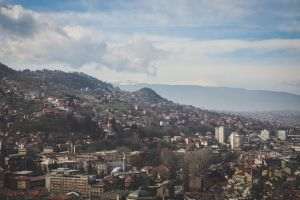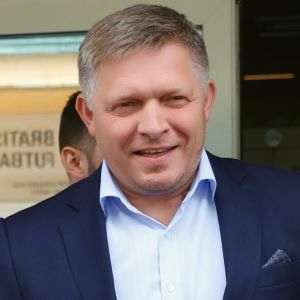Holy Week and the Saturday preceding the celebration of the Lord's Entry into Jerusalem have a special meaning for Cypriots, a country full of ancient historical vestiges and testimonies of the fervent religious life in its lands since the first years of Christianity.
Lazarus Saturday is a very important moment for the Cypriot city of Larnaca, a locality that took its name from the ancient Greek word larnax, which means sarcophagus. Initially, in antiquity and at the dawn of Christianity, Larnaca bore the name of Kition or Citium, which comes from Kittim - a name which, according to the Holy Scripture, belonged to one of Noah's sons, the one who survived the Flood with his family mankind was subjected by God. Therefore, it is believed that the town was founded by Noah's son, Kition being the name used by both the Greeks, the Romans and the Jews.
This is probably why the city's most important festival is called Kataklismous, although historical evidence shows that the town was founded sometime in the 13th century before Christ.
As for the name Larnaca, it was assigned to it after several sarcophagi from antiquity, but also from the first period of the Byzantine Empire, were discovered on the outskirts of the city, following some excavations. Larnaca has a population of 172,000 and is Cyprus' second commercial port and a major tourist destination, known for its picturesque beaches lined with palm columns that grace the nearby promenade, the area named Finikoudes.

But, returning to the Saturday of Lazarus, the one raised from the dead by Jesus Christ before the Entry into Jerusalem (Palm Sunday), Saint Lazarus came to Cyprus after the Son of God was crucified on the cross, rose on the third day and ascended to heaven. Lazarus was ordained Bishop of Kition by the holy apostles Barnabas and Paul and lived in the city for 30 years, after which he passed to eternal life, dying of old age. On the place where Lazarus was buried, a church was built in the Byzantine period, a place of worship that is today in the center of Larnaca and represents the center of Christianity in Cyprus.
Located in the central square, the magnificent stone church of Agios Lazaros is one of the most outstanding examples of Byzantine architecture in Cyprus, having been built by the Byzantine Emperor Leo VI in the 9th century. Later, during the Ottoman rule, the three domes and the original bell tower of the church were destroyed. The place of worship was restored in the 18th century, dating from that time as well as the gold-covered baroque-style wooden pediment. The place where the tomb of Saint Lazarus was found is under the altar, inside the church.
Roxana Konstantinou, guide authorized by the Ministry of Tourism of Cyprus, told us: "In the cathedral of Agios Lazaros in Larnaca there is only part of the relics of Saint Lazarus, the only man who died twice. The other part was taken to France, to Marseilles, by King Hugues, who in the 13th century led a crusade that plundered Constantinople where the respective relics were located, which had arrived in the Byzantine capital during the time of King Leon, who ordered the church to be erected from Larnaca. In honor of Saint Lazarus, on the Saturday before Palm Sunday, a procession takes place in Larnaca in which many residents of the city participate. The icon of Saint Lazarus and the casket with the holy relics are decorated with flowers, after which a religious procession takes place in which they are walked through the streets of Larnaca".
Next to the church is the Byzantine Museum, which exhibits important religious icons, artefacts and religious relics from the entire area around Larnaca.
Also in Larnaca, on the promenade near the beach, there is also the medieval fortress of the city, which had the role of defending the area from the military vessels of other states neighboring Cyprus at that time.
Nearby, almost 20 kilometers from Larnaca, is a UNESCO World Heritage site, the ancient town of Choirokoitia, which dates back to 9,000 BC. and is the oldest and best preserved settlement in the eastern Mediterranean. The site is located on the slope of a hill in the Maroni river valley.
• Lefkara, the town of craftsmen that preserves important religious relics
Between the cities of Larnaca and Limassol, towards the mountainous area, are the rural towns of Lefkara and Tochni. Lefkara is known as an important craft center, where women weave various embroideries or work, together with their husbands, on various filigree silver jewelry.
Legend has it that the famous painter, Leonardo da Vinci himself visited the village in 1481 and bought a lace altar cloth, which he donated to the cathedral in Milan.

The character of the village is very picturesque with its narrow and winding streets and the traditional architecture of old houses with terracotta roofs. Among its interesting sights are the Folklore Museum, the old fountain and the old olive mill. The village also has beautiful and ancient chapels, including the church of Timios Stavros (Holy Cross), and the chapel of Archangelos Michail in Kato Lefkara, with frescoes dating from the 12th and 15th centuries.
Every corner of Lefkara is deeply connected to Christianity, as in every neighborhood and at short distances around the village there are many preserved chapels that function frequently to this day. The Church of the Holy Cross, dating from the 14th century AD, dominates the center of the town.
A distinctive feature of the Church is the carved wooden pediment, built in 1760, which contains a niche in which a large, silver-gilt cross is kept, in which part of the wood of the Holy Cross on which Jesus was crucified is kept Christ. The cross is completely covered with thin sheets of silver. In the front of the Cross can be seen fourteen representations in relief from the life of the Lord, with angels and Saints Constantine and Helen. The representation of the Crucifixion dominates in the center and is covered by two side doors, which represent the Theotokos (Mother of God) and Ioannis (John). This representation is surrounded by four angels. Constantine the Great, the "Crucifixion of Jesus", "Golgotha" and St. Helena are represented in a horizontal row on the Cross. The "Throne of the Second Coming" and the "Resurrection of Jesus" as well as the "Burial" of Christ are represented in a vertical row on the Cross, from top to bottom.
Roxana Konstantinou told us: "According to tradition, the Holy Cross arrived in Cyprus. After the Holy Empress Helena, the mother of the Holy Emperor Constantine, found the Holy Cross, on the way to Constantinople the ship she was in had to stop in Cyprus due to a storm. Legend has it that Elena dreamed one night of the Mother of God who told her to found a church on the highest mountain she could see from the sea. And so the Stavrovouni monastery was founded, where Elena left an important part of the wood of the Holy Cross. Later, part of it reached the church in Lefkara. Also from the time of Saint Helena, legend says that cats appeared in Cyprus. According to tradition, the island was full of snakes and to exterminate them Elena brought cats from Asia".
The Cypriot guide of Romanian origin also told us that in the church there is also a part of the Holy Shroud with which Saint Veronica wiped the Savior on the way to Golgotha: "Tradition says that the piece of cloth was brought to Lefkara by a Russian metropolitan . At first it looked like a simple piece of cloth. Later, after the framing, over time, it acquired the face of Jesus Christ and the traces of the wounds on his face caused by the Roman soldiers and some Jews on the way to Golgotha".
Mrs. Konstantinou also told us that in the town of Omodos in Cyprus there is even a piece of the rope with which Christ was tied by the Roman soldiers in the church.
• Tochni, a locality patronized by the Holy Emperors Constantine and Elena
The nearby rural town of Tochni is also under the protection of Saints Constantine and Elena, whose name is the patron of the current church in the town, but also of the original church from the Byzantine period, the ruins of which can be seen on a nearby hill.
Agritourism is practiced in Tochni, the inhabitants being eager to welcome tourists into their homes and prepare traditional dishes for them. One such example is the Sofronis family, which has such an agro-tourist guesthouse, where the parents and two of their three children - adults now - one of whom is a cook, take care of everything needed for the comfort of those who step on the threshold of their guesthouse .

The culinary offer is generous and the prices are reasonable, tourists also benefit from two swimming pools - one for each of the two villas that contain several rooms or studios where those who want to stay in a mountainous area, but located at only 15 minutes by car from the Mediterranean Sea.
• Limassol - luxury resorts, tourist port dedicated to yacht owners
With a population of approximately 180,000, Limassol is the second largest city in Cyprus, located on an area of 34.87 square kilometers. In addition to being the administrative center of the region around it, the city of Limassol is an important point for the economy of Cyprus through the perspective of the businesses that take place throughout the locality and in the area, through the ports it owns and through the tourism activity which extends almost the entire calendar year.
The bustling center of the city offers a journey back in time, if we consider that the modern building of the city University is located near the old center, the medieval castle, but also close to the new tourist harbor where a lot of yachts are moored and sailing ship.

Jointing the graceful blending of the historical past with the contemporary present is easy to notice near the sea, especially in the cosmopolitan part of the city, where the buildings of big companies and modern residential buildings are only a few kilometers away from neighborhoods where the scent of old cobbled streets with houses prevails with terraces where there are all kinds of small shops, restaurants and cafes.
The city of Limassol is being replaced, according to archaeological findings, since the 8th century BC. In the Byzantine period, the locality was called Nemesos, and the most important historical event dates back to 1191 AD, when the King of England, Richard the Lionheart, saw the strategic importance of Cyprus as a base for supplying the forces that took part in the third crusade and conquered the island. Richard celebrated his marriage to Berengaria, who was crowned Queen of England, in the medieval castle located today in the old town.
In terms of tourism, the city of Limassol developed strongly after the Turkish invasion in 1974, when Famagusta, one of the most touristic areas of Cyprus, was captured by the Turkish armies. Luxury hotels, restaurants and numerous entertainment clubs were built and thus the city soon became a significant tourist center. And this continues to this day, when most hotels and resorts in Limassol are four and five stars, among the latter being St. Raphael Resort, which is included in this year's offer of the Christian Tour company for tourists from our country, accommodation facility where last week the 45th annual conference of the European Association of Computer Graphics Specialists was held. The annual Eurographics conference brought together experts from all over the continent, and the professionals in this field from our country were also present, who presented the progress regarding innovations in computer graphics and interactive techniques.
In the new summer season, the Christian Tour agency offers tourists a dedicated weekly flight (which can be supplemented according to demand) on the Otopeni-Larnaca route and back, which will be inaugurated on June 7, 2024. To drive to Larnaca , AnimaWings - a company that recently became 10% Romanian, after Christian Tour Holding SA acquired the majority stake of 51% from Aegean Airlines - will use its new Airbus A220 aircraft.












































































